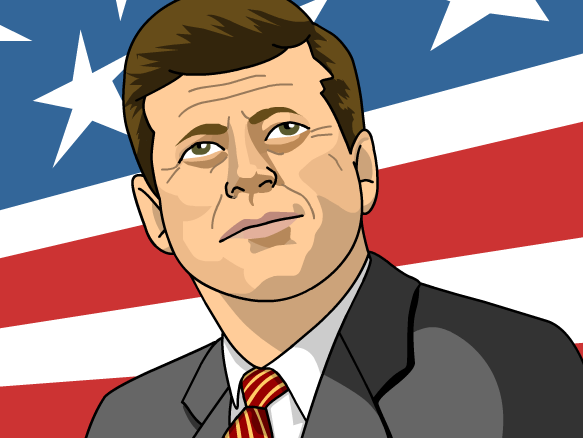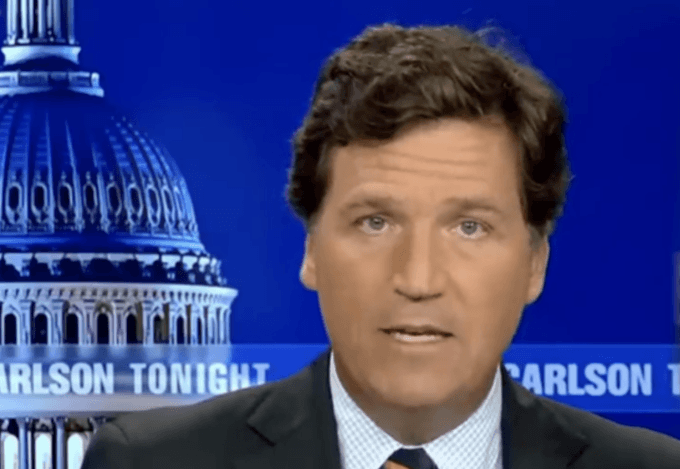NOVANEWS

By Jacob G. Hornberger
Three years ago, I wrote an article entitled “JFK and the Inconceivable Doctrine,” in which I pointed out how many lone-nut theorists in the JFK assassination have reached their conclusion based not on an examination of the circumstantial evidence in the case but instead simply on the notion that it is inconceivable that the U.S. national-security establishment would have carried out a domestic regime-change operation by assassinating an American president.
I would invite readers to read or review that article. The purpose of this article is to elaborate on this theme.
A lone-theorist might say, “Jacob, it is just inconceivable that the CIA and the Pentagon would engage in assassination.”
Yet, the evidence is overwhelming that both the Pentagon and the CIA have assassinated people and, in fact, continue to assassinate people.
The circumstantial evidence indicates that as far back as 1953 the CIA was specializing in the art of assassination. That fact is demonstrated by the discovery in the 1990s of a top-secret CIA assassination manual that was being developed as part of the U.S. national-security state’s regime-change operation against Guatemalan president Jacobo Arbenz. Entitled “A Study of Assassination,” the manual not only details methods to assassinate people, it also examines ways to prevent people from discovering that the CIA was behind the assassination. For example, the manual recommends tossing a person out of a high-story building and making it look like a suicide, so that people wouldn’t suspect that the CIA has assassinated the victim.
The CIA’s assassination manual was not simply an intellectual or theoretical exercise. It was an actual manual for assassinating people. In fact, the CIA actually developed a list of people to be assassinated as part of its 1954 regime-change operation against Guatemala.
A lone-nut theorist might say, “Jacob, fair enough. By the time of the Kennedy assassination, the CIA was specializing in the art of assassination. But it is simply inconceivable that the CIA would assassinate an innocent person.”
But the circumstantial evidence overwhelmingly establishes that the CIA was assassinating innocent people. For example, before Kennedy became president, the CIA targeted Congo leader Patrice Lumumba for assassination. He was innocent in the sense that he had never initiated any act of violence against the United States.
As part of the CIA’s 1954 regime-change operation against Guatemala, the CIA developed a top-secret list of Guatemalan officials who were to be assassinated as part of the operation. We are still not permitted to see the names of the people on that top-secret list but there is little doubt that Arbenz was at the top of the list. Fortunately for him, he escaped from the country before they could assassinate him. Arbenz was innocent in the sense that he and his government had never initiated any act of violence against the United States. In fact, the only reasons he was targeted for regime change were because of his socialist-communist proclivities and his desire to establish friendly and peaceful relations with the Soviet Union, including Russia.
There was also the CIA’s top-secret assassination partnership in the early 1960s with the Mafia, the world’s premier criminal and heroin-running organization at that time. The purpose of that partnership was to assassinate Cuban leader Fidel Castro, notwithstanding the fact that neither Castro nor the Cuban government had ever initiated any act of violence against the United States. Like Arbenz, Castro was considered to be a legitimate target of assassination because of his devotion to socialism and communism and his desire to have normalized, friendly, and peaceful relations with the Soviet Union, including Russia.
In the early 1970s, there was the CIA’s plot to kidnap and assassinate Gen. Rene Schneider, the overall commanding general of Chile’s armed forces. What had Schneider done to deserve kidnapping and assassination? He opposed the U.S. national-security establishment’s desire for a military coup that would oust Chile’s president, Salvador Allende. That was it. That’s why he was murdered.
A lone-nut theorist might say, “Okay, fair enough, Jacob. They do assassinate innocent people, that is people who have never initiated any act of violence against the United States. But it is simply inconceivable that they would assassinate a democratically elected leader of a country.”
Once again, however, the circumstantial evidence overwhelmingly supports the contrary. Arbenz, after all, was the democratically elected president of Guatemala. Lumumba was the democratically elected prime minister of the Congo. Allende was the democratically elected president of Chile. (While the evidence indicates that Allende committed suicide rather than be taken prisoner by his national-security establishment during the coup, there is no doubt that the U.S.-supported Chilean military was trying to assassinate Allende during the coup by firing missiles from jet planes into his position in the national palace.)
A lone-nut theorist might say, “Okay, Jacob, I am willing to acknowledge that they do assassinate democratically elected leaders. But it is simply inconceivable that they would murder an American citizen.”
Yet, the circumstantial evidence indicates otherwise. During the Chilean coup, for example, two Americans, Charles Horman and Frank Teruggi, were executed by the Chilean national-security establishment. A top-secret State Department investigative report concluded that U.S. intelligence had played a role in those murders. The report didn’t detail the exact role but it had to be that U.S. intelligence simply requested their Chilean counterparts to execute Horman and Teruggi. The report recommended further investigation but, not surprisingly, that recommendation went nowhere.
Why did U.S. intelligence officials want Horman and Teruggi dead? Three reasons. One, the two men believed in socialism and were supporters of Allende, who, like Arbenz and Castro, was a socialist. Two, Horman had discovered U.S. national-security state complicity in the coup, something U.S. officials were determined to keep absolutely top secret. Three, Teruggi was considered a traitor because he opposed U.S. intervention in the Vietnam War.
There is also the case of Frank Olson, an American civilian working for the U.S. national-security establishment. He had a crisis of conscience regarding the U.S. national-security establishment’s top-secret MKULTRA program and its illegal use of germ warfare against the North Korean people during the Korean War. As detailed in the book A Terrible Mistake: The Murder of Frank Olson and the CIA’s Cold War and the Netflix series Wormwood (both of which I highly recommend), Olson was thrown out of high-story hotel in New York City, but it was made to look like suicide from an MKULTRA drug experiment against him that had supposedly gone awry. That, of course, was precisely one of the methods of assassination that were recommended in that top-secret 1953 CIA assassination manual.
I should also mention the U.S. national-security state assassinations of Mary Pinchot Meyer and Dorothy Kilgallen, both of whom were Americans, as detailed in the excellent books Mary’s Mosaic: The CIA Conspiracy to Murder John F. Kennedy, Mary Pinchot Meyer, and Their Vision for World Peace by Peter Janney and The Reporter Who Knew Too Much by Mark Shaw.
And of course, there are the recent assassinations of American citizens Anwar al-Awlaki and his 16-year-old son Abdulrahman, along with the entire formal assassination program that has now become an open and permanent program within the U.S. government.
A lone-nut theorist might say, “Okay, Jacob, I will acknowledge that they are willing to assassinate American citizens if they are convinced that “national security” requires it. But it is simply inconceivable that they would assassinate a democratically elected president of our country.”
But what if the president of the United States is perceived to be an even greater threat to “national security” than, say, Patrice Lumumba, Fidel Castro, Jacobo Arbenz, and Salvador Allende?
Indeed, as Douglas Horne details in FFF’s ebook JFK’s War with the National Security Establishment: Why Kennedy Was Assassinated, there was a vicious war that was being waged below the radar screen between Kennedy and the Pentagon and the CIA over the future direction of the United States, something they kept secret from the American people for decades.
Kennedy was determined to establish peaceful and friendly relations with the Soviet Union, including Russia, Cuba, and the rest of the communist world, which, needless to say, would have removed the justification for converting the federal government to a national-security state in the first place.
The U.S. national-security establishment, not surprisingly, considered Kennedy’s actions to be akin to surrender or defeat at the hands of the communists. As far as they were concerned, peaceful coexistence with the Soviet Union, Russia, and the rest of the communist world was impossible. For them, this was a fight to the finish, even if that meant nuclear war.
The Pentagon and the CIA considered Kennedy to be a naïve, incompetent, treasonous president who was placing America in much greater danger than foreigner leaders like Arbenz, Castro, and Lumumba were doing and like Allende would later do.
For his part, Kennedy considered people with that type of mindset to be nut-balls. That’s why after seeing an advertisement accusing him of treason in the Dallas Morning News on the morning of the assassination, he turned to his wife Jackie and remarked, “We are headed into nut country today.”
Notwithstanding the overwhelming amount of circumstantial evidence pointing toward a national-security domestic-regime change operation carried out on November 22, 1963, many lone-nut theorists continue to hew to the notion that it is just inconceivable that the U.S. national-security establishment would act to protect America from a president whose policies were perceived to constitute a grave threat to “national security.” To actually explore the evidence in the case is still just too frightening for them.
For more information:
The Kennedy Autopsy by Jacob Hornberger
JFK’s War with the National Security Establishment: Why Kennedy Was Assassinated by Douglas Horne
Regime Change: The JFK Assassination by Jacob Hornberger
The CIA, Terrorism, and the Cold War: The Evil of the National Security State by Jacob Hornberger
CIA & JFK: The Secret Assassination Files by Jefferson Morley
“The National Security State and JFK,” a FFF conference featuring Oliver Stone and ten other speakers
“Altered History: Exposing Deceit and Deception in the JFK Assassination Medical Evidence,” a five-part video by Douglas P. Horne
JFK and the Unspeakable: Why He Died and Why It Matters by James W. Douglass



